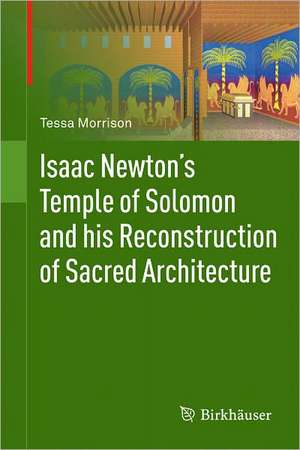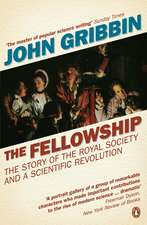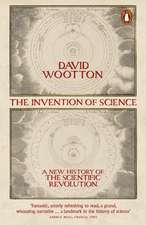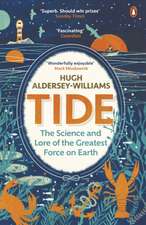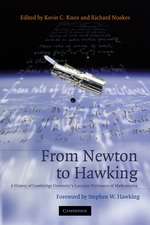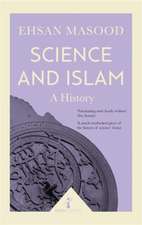Isaac Newton's Temple of Solomon and his Reconstruction of Sacred Architecture
Autor Tessa Morrisonen Limba Engleză Hardback – 15 dec 2010
| Toate formatele și edițiile | Preț | Express |
|---|---|---|
| Paperback (1) | 383.12 lei 6-8 săpt. | |
| Springer – 20 sep 2014 | 383.12 lei 6-8 săpt. | |
| Hardback (1) | 387.75 lei 6-8 săpt. | |
| Springer – 15 dec 2010 | 387.75 lei 6-8 săpt. |
Preț: 387.75 lei
Nou
Puncte Express: 582
Preț estimativ în valută:
74.20€ • 80.58$ • 62.33£
74.20€ • 80.58$ • 62.33£
Carte tipărită la comandă
Livrare economică 22 aprilie-06 mai
Preluare comenzi: 021 569.72.76
Specificații
ISBN-13: 9783034800457
ISBN-10: 3034800452
Pagini: 208
Ilustrații: XIX, 186 p.
Dimensiuni: 155 x 235 x 18 mm
Greutate: 0.41 kg
Ediția:2011
Editura: Springer
Colecția Birkhäuser
Locul publicării:Basel, Switzerland
ISBN-10: 3034800452
Pagini: 208
Ilustrații: XIX, 186 p.
Dimensiuni: 155 x 235 x 18 mm
Greutate: 0.41 kg
Ediția:2011
Editura: Springer
Colecția Birkhäuser
Locul publicării:Basel, Switzerland
Public țintă
ResearchDescriere
In the 1680s Isaac Newton wrote the Philosophiae Naturalis Principia Mathematica. At the same time he was also working on a recreation of the plan of Solomon’s Temple. In an unpublished manuscript entitled Introduction to the Lexicon of the Prophets, Part two: About the appearance of the Jewish Temple, or more commonly known by its call name Babson MS 0424, he described the architecture of the Temple. His main source for his recreation was the Book of Ezekiel, but he also used and compared it with a wide selection of Jewish, Classical, and contemporary sources, and he demonstrated a good knowledge and understanding of Vitruvius in his search for the truth of Solomon’s Temple. The aim of this book is three-fold. First it contains a translation of Babson MS; this is the first translation of this manuscript into English. This manuscript contains two reconstructions of the Temple. Both are working documents that attempt to reconstruct the plan of the Temple using the text of Ezekiel which is supported with a mixture of classical and contemporary sources. The first reconstruction is illustrated. One particular image is of the Temple precinct and it is annotated with letters to match the description in the first reconstruction. This is a well known image and is often reproduced as the plan of Newton’s Temple. Although the first description lays out the ground plan it only gives a few details of the uprights and cannot be fully reconstructed. However the second reconstruction is a great deal more detailed in its description and it reveals changes to the first reconstruction in its ground plan – it also gives enough description to be full reconstruction. Second, the book provides a commentary to accompany the translation which puts Babson Ms 0434 into context with Newton’s other works on science, chronology, prophecy and theology. Although Babson Ms 0434 is a architecture work, Newton also discusses the Temple and its rituals in many of his unpublished papers in its religious context. He conceived the Principia as the exoteric knowledge of nature while the prophets held the esoteric knowledge of nature. The prophets could only be interpreted through hieroglyphs understood through the framework of the architecture and rituals of Solomon’s Temple. The Temple was also important to his works on chronology After his death Chronology of Ancient Kingdoms Amended was published in 1728; this contains a small description of Solomon’s Temple of barely 3000 words with detailed three drawings, this detail is not reflected in his description. These topics are discussed in detail. Third, the book contains a reconstruction of Newton’s plan of the Temple. The three reconstructions, the two in Babson Ms 0434 and the one in Chronology are discussed and compared. The first reconstruction in Babson Ms 0434 and in Chronology are only ground plans and cannot be reconstructed in a three-dimensional model. However, the second reconstruction is a full description of the ground plan and the uprights. The book creates a reconstruct of Newton’s verbal description of the Temple using ArchiCad. This reconstruction brings Newton’s plan of the Temple alive. This reconstruction is contained within the sample chapter at the end of this proposal.
Cuprins
From the contents: Preface by Kim Williams.- Introduction.- Chronology, Prisca Sapientia and the Temple.- Prophesy and the Temple.- Prytanæum and the Floor Plan of the Temple of Solomon.- The Temple Measurements and the Sacred Cubit.- An Overview of the Contents and the Source of Babson MS 0434.-Reconstruction.- Conclusion.- Translation of Babson MS 0434.- Bibliography.- Index.
Textul de pe ultima copertă
Isaac Newton’s unpublished manuscripts reveal that for over fifty years he had an interest in the Temple of Solomon. He wrote on the Temple’s meaning, the rituals associated with it, and even recreated the architectural plan. In an unpublished manuscript entitled Introduction to the Lexicon of the Prophets, Part two: About the appearance of the Jewish Temple, or more commonly known by its call name Babson MS 0424, he described the plan and the architecture of the Temple. His main source for this reconstruction was the Book of Ezekiel, but he also used and compared this source with a wide selection of Jewish, Classical and contemporary sources in his search for the truth. The aim of this book is three-fold. Firstly, it contains the first translation of the Babson MS 0434 manuscript into English. Secondly, it provides a commentary to accompany the translation which puts Babson MS 0434 into context with Newton’s other works on science, chronology, prophecy and theology. Thirdly, there is a full reproduction of Newton’s plan of the Temple, accompanied by six drawings. While the visualization of Newton’s recreation of the Temple was not contained in the manuscript, his verbal description is clear enough to be able to reconstruct the design using ArchiCad, bringing Newton’s plan of the Temple alive. This work will appeal not only to scholars of architectural history but also to all those interested in the history of ideas in the seventeenth and eighteenth centuries.
Caracteristici
Contains the first translation of Newtons work "Introduction to the Lexicon of the Prophets, part two: About the appearance of the Jewish Temple" into English
Shows Newton as an architect and how his work on the temple interlinks with his other interests of science, chronology, prophecy and theology
Recreates Newton's reconstruction of the Temple of Solomon
Includes supplementary material: sn.pub/extras
Shows Newton as an architect and how his work on the temple interlinks with his other interests of science, chronology, prophecy and theology
Recreates Newton's reconstruction of the Temple of Solomon
Includes supplementary material: sn.pub/extras
